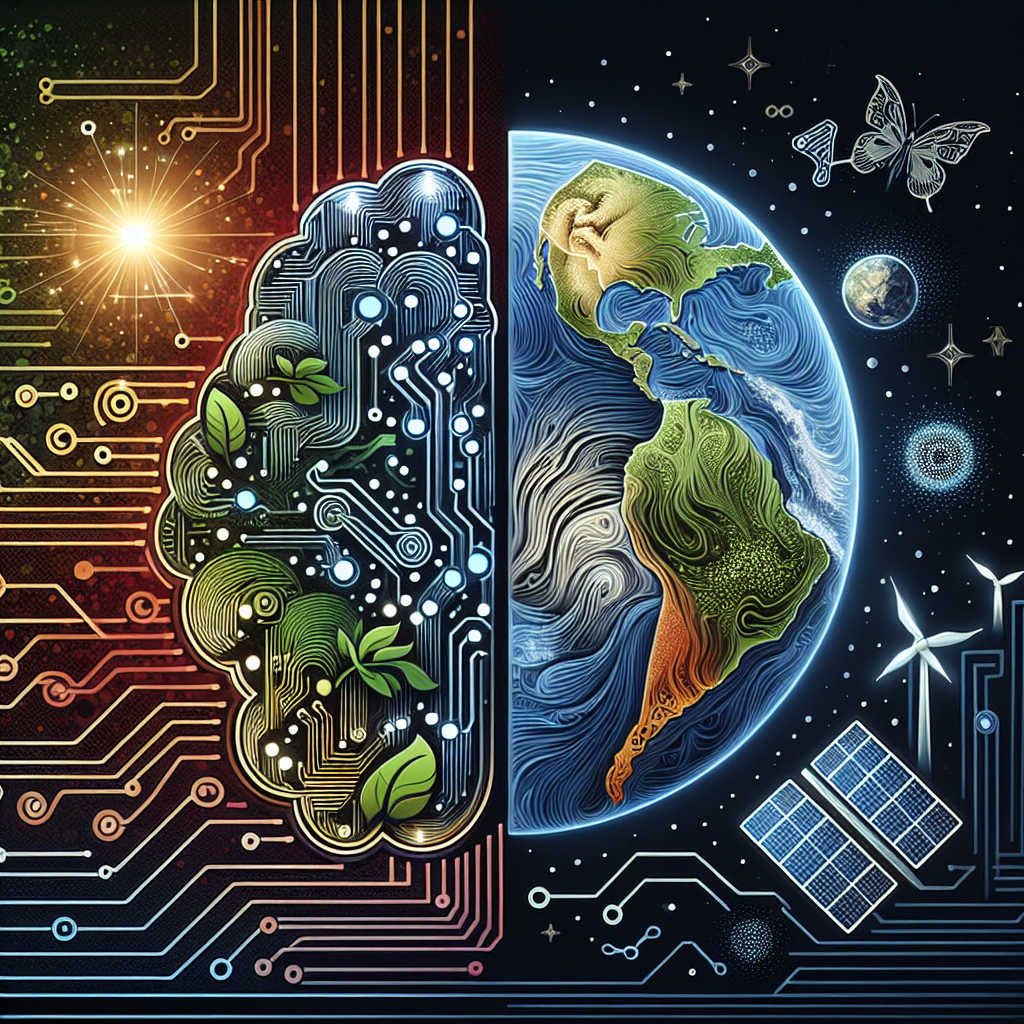AI and Climate Change: Leveraging Technology to Address Environmental Challenges and Sustainability
Climate change is one of the most pressing issues facing our planet today. The consequences of global warming and environmental degradation are becoming increasingly evident, from rising sea levels and extreme weather events to loss of biodiversity and food insecurity. In order to combat these challenges and work towards a more sustainable future, it is crucial to leverage technology in innovative ways. Artificial intelligence (AI) has emerged as a powerful tool in the fight against climate change, offering new opportunities to monitor and manage environmental resources, optimize energy consumption, and develop sustainable solutions.
The Intersection of AI and Climate Change
AI refers to the simulation of human intelligence in machines that are programmed to think and act like humans. This technology has the potential to revolutionize the way we approach environmental issues and address climate change. By analyzing vast amounts of data and identifying patterns and trends, AI can help us better understand the impact of human activities on the environment and develop strategies to mitigate these effects.
One of the key applications of AI in the fight against climate change is in monitoring and predicting environmental changes. AI algorithms can analyze satellite imagery, weather data, and other sources of information to track changes in land use, deforestation, and carbon emissions. This data can then be used to predict future trends and develop targeted interventions to reduce the impact of these activities on the environment.
AI can also be used to optimize energy consumption and reduce greenhouse gas emissions. By analyzing data on energy usage patterns, AI algorithms can identify opportunities for energy efficiency improvements and recommend strategies to reduce energy consumption. This can help businesses and individuals reduce their carbon footprint and contribute to a more sustainable future.
Furthermore, AI can be used to develop innovative solutions to environmental challenges. For example, AI-powered drones can be used to plant trees in deforested areas, monitor wildlife populations, and track illegal logging activities. AI algorithms can also be used to optimize transportation routes, reduce waste in manufacturing processes, and develop new materials that are more environmentally friendly.
In addition to these applications, AI can also help us better understand the impact of climate change on human health and well-being. By analyzing data on air quality, water pollution, and other environmental factors, AI algorithms can help identify at-risk populations and develop targeted interventions to protect their health.
Overall, AI has the potential to revolutionize the way we address climate change and work towards a more sustainable future. By harnessing the power of this technology, we can better monitor and manage environmental resources, optimize energy consumption, and develop innovative solutions to environmental challenges.
FAQs
Q: How can AI help us monitor and manage environmental resources?
A: AI algorithms can analyze data from satellite imagery, weather data, and other sources to track changes in land use, deforestation, and carbon emissions. This information can help us better understand the impact of human activities on the environment and develop strategies to mitigate these effects.
Q: How can AI help us reduce greenhouse gas emissions?
A: By analyzing data on energy usage patterns, AI algorithms can identify opportunities for energy efficiency improvements and recommend strategies to reduce energy consumption. This can help businesses and individuals reduce their carbon footprint and contribute to a more sustainable future.
Q: What are some innovative solutions to environmental challenges that AI can help develop?
A: AI-powered drones can be used to plant trees in deforested areas, monitor wildlife populations, and track illegal logging activities. AI algorithms can also be used to optimize transportation routes, reduce waste in manufacturing processes, and develop new materials that are more environmentally friendly.
Q: How can AI help us better understand the impact of climate change on human health?
A: By analyzing data on air quality, water pollution, and other environmental factors, AI algorithms can help identify at-risk populations and develop targeted interventions to protect their health.
In conclusion, AI has the potential to revolutionize the way we address climate change and work towards a more sustainable future. By leveraging the power of this technology, we can better monitor and manage environmental resources, optimize energy consumption, and develop innovative solutions to environmental challenges. It is crucial that we continue to explore the possibilities of AI in the fight against climate change and work towards a more sustainable future for generations to come.

